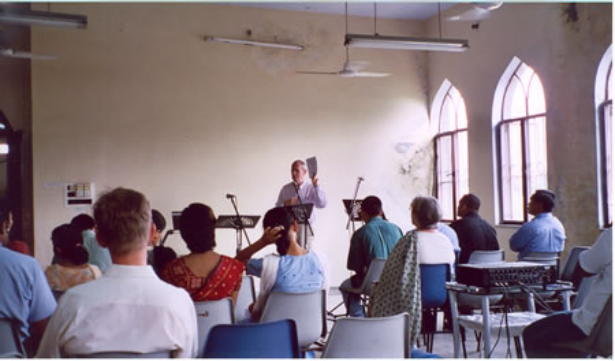Presbyterians in India struggle to balance indigenous and received culture
Whether they are drama leaders in a North American mega church or Catholic priests in a Mexican village, Christians everywhere wrestle with how much of culture to appropriate in worship. They debate the difference between yielding to syncretism and following Paul’s desire “to become all things to all men so that by all possible means I might save some”

|
| Click to View the Slideshow on the Covenant Reformed Presbyterian Church in India |
Whether they are drama leaders in a North American mega church or Catholic priests in a Mexican village, Christians everywhere wrestle with how much of culture to appropriate in worship. They debate the difference between yielding to syncretism and following Paul’s desire “to become all things to all men so that by all possible means I might save some” (1 Corinthians 9:22).
As you meet Christians from other countries and learn how to pray for them, remember that worship tensions can be especially complicated in churches started by missionaries from other cultures and eras.
Many denominations in India, for example, were started by American or British Presbyterians who taught that true worship may include only what is specifically commanded by God in Scripture.
“The tendency of the churches has been—and still is—to stay away from everything Indian so that we won’t fall into the danger of syncretism. But that makes worship so alien,” says Mohan Chacko, president of Presbyterian Theological Seminary (PTS) in Dehra Dun, India. The seminary serves students from several Reformed and Presbyterian denominations from India, Nepal, Bhutan, Myanmar, and Bangladesh.
In his fascinating essay “Indigenizing Worship: How Far Should We Go?” Chacko’s colleague Raja Krishnamurthy notes that many Indian Christians follow patterns inherited from the west. These Indian churches have stained glass windows, an altar with an ornate cross, a robed minister in a beautiful pulpit, organ music, and solemn worshipers, dressed in Sunday best and seated in dark wooden pews.
Krishnamurthy presented his paper at the “Reformed Worship in the Indian Context” conference in January 2005. Along with other thoughtful presentations, including Chacko’s on the body in worship, the conference sparked vigorous discussions.
Conferees agreed that it’s hard to define what is truly Indian, because there are so many ethnic groups and languages in this sprawling country, as well as huge gulfs between socioeconomic classes and between urban and rural areas.
Still, several conferees argued, even if a single culture doesn’t define all of India, there are recognizable subcultures. And churches might grow faster if they took a more transformative view, expressing the gospel in language, music, and events familiar to local people.
People were still talking about these issues half a year later, when Lyle Bierma taught a 2005 summer church history course at PTS. “The seminary has an extensive worship life, with daily chapels, evening devotions, and Sunday services in several languages.
“The students are very enthusiastic about John Calvin and the Reformation. Some are excited about getting involved in local culture. Others resist, saying, ‘If you get too involved in Indian society, you’ll be corrupted,’ ” Bierma says.
During his time in Dehra Dun, Bierma attended English language services that were quite formal. Families sat together, but single males and females sat separately.
Chacko says he sees signs that “in our own congregations here in Dehra Dun, worship has become more lively. There is a greater openness to using Indian cultural elements.”
In the Hindi service, worship leaders sometime choose songs that appeal to younger worshipers. Musicians are starting to use drums, both Western-style trap sets and traditional tabla hand drums, which sound like this. There is increased use of responsive readings and more congregational members involved in leading worship.
“These changes may be nothing new for some of you in North America, but for us here, the changes have been refreshing,” Chacko adds.